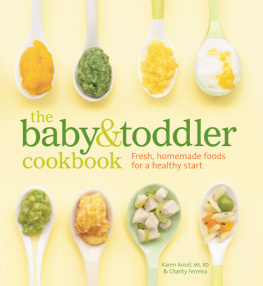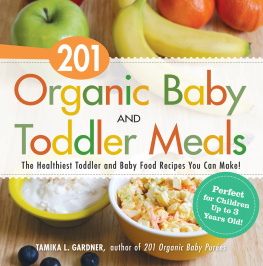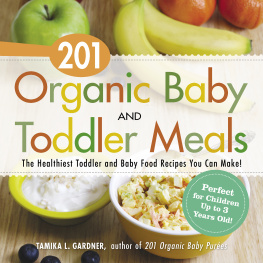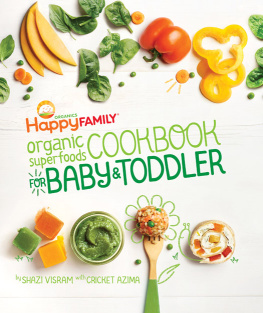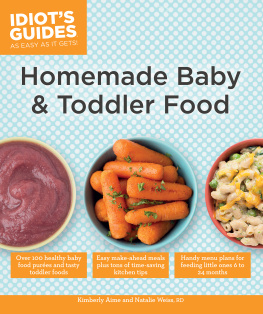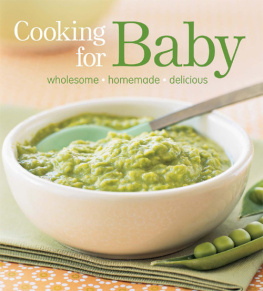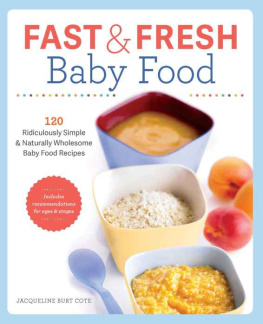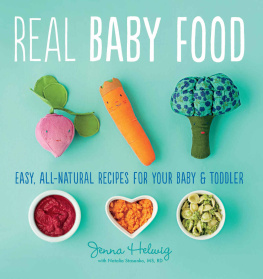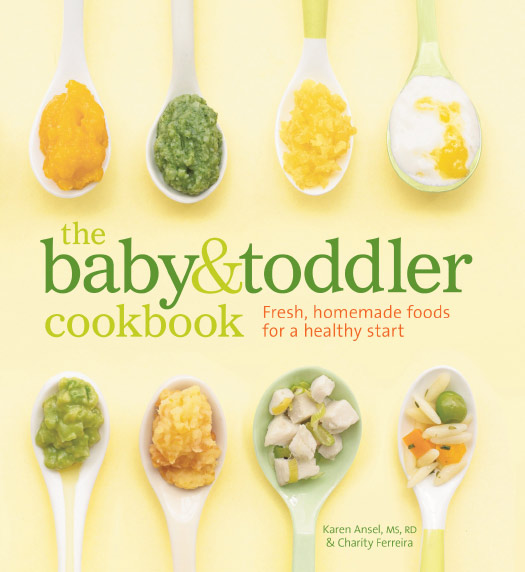Of the many milestones of babys first year, starting solids is an adventure youll never forget. Some days, youll be met with an eager mouth thats wide open, and giggles and squeals of delight. On others, you may encounter lips tightly pursed shut, cereal bowls turned upside down, and sippy cups knocked to the floor.
Yet with love, patience, and a steady supply of nutritious food, you can have a profound impact on this journey. In fact, nobody has a greater influence on your childs eating habits than you do. By offering baby a wide variety of healthful, tasty foods, you can help her become a well-rounded and adventurous eater.
Choosing to prepare homemade food for your baby lets you decide exactly what goes into it. Thats not to say youll never reach for a jar of baby food on busy days or in a pinch, but making babys meals fresh from your kitchen is one of the best gifts you can give her.
When you prepare babys food yourself, you know its free of unnecessary additives like starches, thickeners, and preservatives. You can also control things that baby doesnt need, like sugar and salt. Home-cooked baby food allows you to use seasonal ingredients packed with flavor and harvested at their nutritional peak. While it might take a little extra effort, making homemade food is easier than you might think, especially because you can make it in large batches from ingredients that are already in your kitchen, and then store it for later meals. That allows you to feed baby many of the same foods that the rest of the family is eating and can also save you money.
Baby food that you make in your kitchen tastes better because its fresher. Cooking from scratch also allows you to offer baby a wider variety of ingredients, since not all foods are available as commercial baby food. That means shell learn to eat many different kinds of fruits, vegetables, grains, and proteins, as well as aromatics, herbs, spices, and your selection of the best-quality, free-range, antibiotic-free meats. By exposing her to many different kinds of flavors early on, shell be more likely to try and accept new and different foods later as a toddler.
You can also make sure the texture is just right. This is especially important because the textures of foods are as new to baby as the flavors. At first, you can thin babys food with breast milk or formula. Then, as she becomes a more adept eater, you can make it thicker and chunkier so its just right for each stage she passes through.
Starting solids
Until now, breast milk or iron-fortified formula has given baby all the nutrition he needs to grow and thrive. But as he nears six months of age, his digestive system begins to mature, and he is now able to digest solid foods.
When is baby ready?
At six months, baby is physically starting to develop the skills he needs to transition to solid foods. But how do you know when he is ready to take his first spoonful? The best way is to follow his lead and watch for the following signs:
Baby can sit upright with support.
He holds his head steady.
He will open his mouth or lean forward when food is offered in front of him.
He can swallow food when it is placed in his mouth instead of pushing it back out.
He is interested in what you are eating.
Complementary foods
Even though baby may be ready for solid foods, breast milk or iron-fortified formula will still be the mainstay of his diet. In fact, a baby who is just starting solids may eat only a few teaspoons at each sitting.
Complementary foods such as pureed squash, rice cereal, and applesauce do more than just provide added nutritionthey help baby learn how to eat, chew, and swallow food and to accept and adapt to new tastes and textures.
Breast is still best
Breast milk is natures perfect first food and the best nutritional start. In fact, health experts recommend breast- feeding your baby exclusively for his first six months, if possible, and then offering both breast milk and solids until at least age one.
The benefits of breast-feeding include the following:
Breast milk provides antibodies that help protect baby against illness and infection.
Breast-fed babies have fewer tummy troubles. Mothers milk is easier for them to digest than formula and encourages the development of babys digestive system.
The flavors from the foods you eat are passed into your milk, exposing baby to a wide range of flavors.
Breast milk contains beneficial fats that enhance mental development.
Breast-feeding also protects against the development of food allergies, obesity, diarrhea, and ear and respiratory infections.
New foods at every stage
Over the next few months, you will slowly help your baby progress from thinned purees to table food. Heres what you can expect:
4 to 6 months
Single-grain cereals such as rice, barley, millet, or oats that have been thinned with breast milk or formula; supplementing these cereals, which are high in minerals, fiber, protein, and B vitamins, with iron-rich formula or breast milk will help ensure that your baby gets the iron he needs to support his rapid growth
Pureed sweet, low-acid fruits like apples and pears, and starchy-sweet vegetables such as peas and sweet potatoes
7 to 8 months
A wider range of fruit and vegetable purees, including brightly flavored fruits like peaches, plums, and cherries, and earthy-tasting vegetables like beets, asparagus, mushrooms, and green beans
Combinations of purees using any of the ingredients baby has been introduced to so far, to broaden babys taste for flavors
Coarserand sometimes chunky, if baby can handle itpurees of cereals, vegetables, fruits, and meats to familiarize baby with different textures and to initiate chewing
High-protein, soft-cooking legumes such as lentils and split peas
A touch of added fats (butter, olive oil) to add flavor and increase the pleasant feeling of food in babys mouth
Babys first meats: purees of lamb, beneficial because its high in iron, and turkey, a good source of lean protein thats easy to digest
9 to 11 months
Coarse, chunky, or mashed fruit, vegetable, and legume purees
Small chunks of soft, cooked vegetables and very ripe fruits
Whole-milk yogurt, ricotta, or cottage cheese
Shredded semihard cheeses such as Cheddar and Monterey jack
Finely minced meats, including chicken and pork, and egg yolks
More herbs, spices, and aromatics such as onion and garlic
Fruit juice100-percent juice; should be limited to cup (2 fl oz/60 ml) a day
1 year and up
Table foods that the whole family is eating, such as soups and stews, pasta and noodles, or quesadillas, cut into bite-sized pieces
Honey
Whole cows milk
Fish
Citrus fruits
Small amounts of salt and pepper

